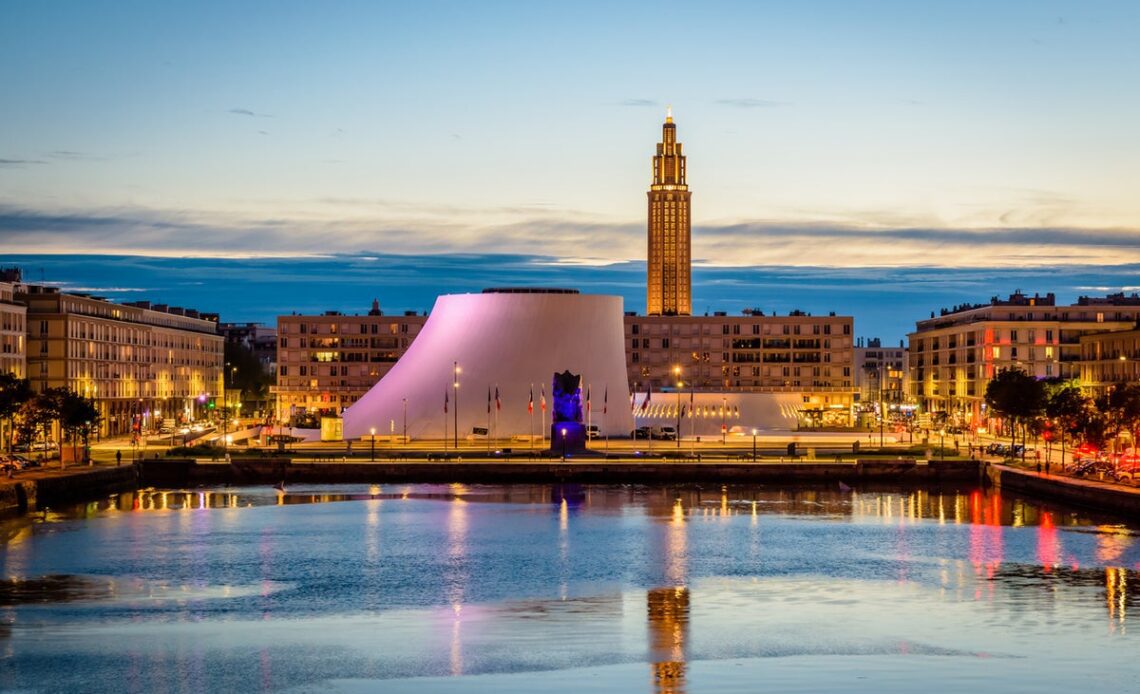The unconventionally striking port city of Le Havre, Normandy, is a survivor, rebuilt virtually from scratch following WWII. It bears little resemblance to Monet paintings you’ve seen (the artist moved to Le Havre aged five), but instead looks like a contemporary art gallery, with rainbow-coloured shipping containers, geometric sculptures, and a concert hall inside a building shaped like a volcano.
Too often overlooked by tourists passing through en route to Honfleur or the cliffs of Étretat, ultra-modern Le Havre rewards travellers looking for somewhere a little different. Artisan breweries overflow nightly, there’s a distinctly global restaurant scene, and the city has the distinction of having achieved Unesco World Heritage status in the shortest time following re-construction.
Les Bains des Docks pools
(Anna Richards)
What to do
Fall in love with concrete
Le Havre’s blend of Brutalist and Gothic architecture divides opinions. In 1944, extensive Allied bombing of German-occupied Le Havre all but turned the city to rubble, so controversial architect and concrete aficionado Auguste Perret was enlisted post-war to replan the city as fast as possible. Perret was already famous for his work using reinforced concrete, a cheap and quick way to construct buildings, and a way to use the existing débris. He saw concrete as a material that could be beautiful and created Grecian-style pillars from it, playing with pinks, whites, and different textures.
To see the best of the local builds, start at l’appartement témoin Perret, a perfectly preserved slice of the 1950s (guided visits €5; free first Saturday of each month). From here, wander down Avenue Foch, where the apartments of the richest locals are made from white concrete as smooth as marble, and finish at St Joseph’s Church (free entry), the tallest spire on Le Havre’s seafront skyline. The exterior resembles a concrete lighthouse and isn’t to everyone’s taste, but the stained-glass windows, which create a kaleidoscopic light display inside, easily win over sceptics.
Jump forward to the 1980s in the company of Brazilian architect Oscar Niemeyer. His concrete building resembling a power station, Le Volcan on Place General de Gaulle, is the city’s theatre, and the squat UFO-like building next door is the library (free entry).
Become an art anti-snob
Much like Marcel…
Click Here to Read the Full Original Article at The Independent Travel…
